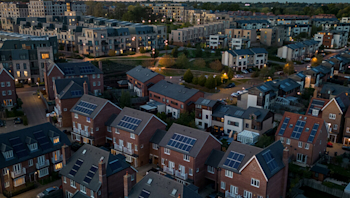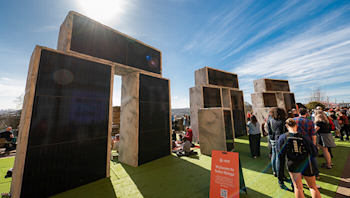Jargon buster: future energy explained
Demand Side Response. Net zero. Aggregation… There’s a lot of technical language surrounding the work we do at Hive Honeycomb. But you don't have to get lost in a world of jargon. We've taken all those tricky techy words and explain them all here.
Aggregation: this is when different devices are connected to form a larger, more powerful cluster. For example, a single EV battery only has a relatively small amount of storage capacity. But if you aggregate (connect) 100 or more together, you’ll end up with something much more significant and useful.
Carbon neutral: when all CO2 released into the atmosphere by the activities of a company or individual is balanced by the same amount being removed. This is a bit different from zero carbon (which implies no emissions at all) but it’s essentially the same as net zero.
Cloud-based: technology that runs programs (and stores information) on the internet rather than on the hard drives of computers.
Demand Side Response (DSR): DSR is an intelligent system that controls and exchanges the flow of our electrical energy. We can all contribute to it, harnessing renewable energy to make it more reliable and better value for everyone.
Distribution Network Operator (DNO): these are the companies licensed to distribute electricity in the UK. There are currently six of them, each operating in a different region. The DNOs are responsible for getting the electricity from the National Grid to individual homes and businesses. They own and manage the network of towers, transformers, cables and meters that play a vital role in the energy system.
Distribution System Operator (DSO): this is a term used to describe the role DNOs will play in the electricity system of the future – as they increasingly help manage the bigger flow of electricity away from businesses and homes and onto the grid. It’s a role that will become more important as localised, small-scale Demand Side Response becomes more common – and helps with the transition to renewable energy.
Energy efficiency: cutting waste so less energy can perform the same task.
Energy transition: the global shift from fossil fuels to renewables in energy production, supported by the advances in battery storage technology.
EV: electric vehicle. The batteries that power EVs will make electric storage capacity much more accessible to consumers.
Grid: the system that transports energy from power plants to our homes through a transmission and distribution network.
Heat pump: a device that efficiently transfers heat from the ground, water or air surrounding a property and increases it to a more useful temperature for use in the home. It works by absorbing warmth from the surroundings using a special refrigerant material which turns from liquid to gas as it heats up. This is then compressed using electricity to increase the temperature even further, before being used to heat the home. It’s a low-carbon and energy-efficient technology that could play a key role in helping the UK reach its net zero targets.
Net zero: a term that’s similar to carbon neutral. It describes a situation when all greenhouse gases being emitted into the atmosphere are balanced by the greenhouse gases being removed from the atmosphere. Reaching net zero on a global scale is seen as a crucial target in tackling climate change.
Non-renewable energy: any form of energy that isn’t derived from naturally self-replenishing sources like wind or solar. Non-renewables include fossil fuels like coal, natural gas and oil – as well as nuclear which needs fuel to keep producing energy.
Prosumer: an industry term for an electricity consumer that also produces a portion of their own electricity from a renewable source for their own consumption.
Renewable energy: sometimes referred to as clean or green energy. Renewable energy comes from natural sources or processes that are not depleted when used – such as solar, wind, hydroelectric and geothermal.
Smart energy tariff: these tariffs work with your smart meter. The smart meter informs your electricity supplier how much electricity you use every half an hour. So suppliers can then offer different electricity prices depending on the time of day you use your electricity. They are usually cheaper overall than a regular tariff.
Smart meter: an updated and more sophisticated version of traditional energy meters. They give you and your energy provider regular and accurate updates on the amount of electricity and gas you use.
Transmission Network Operator (TNO): a company licensed to transport energy in the form of natural gas and electrical power from energy generation sites round the UK on a national or regional level, using fixed infrastructure.
Virtual Power Plant (VPP): when different homes, businesses and devices are connected on a software platform like Hive Honeycomb. Their combined storage capacity can be aggregated to create a Virtual Power Plant that can provide significant reserves of energy to the grid at the most useful and valuable times.
Zero Carbon: means no carbon are produced, for example, electricity being produced by a wind farm.







